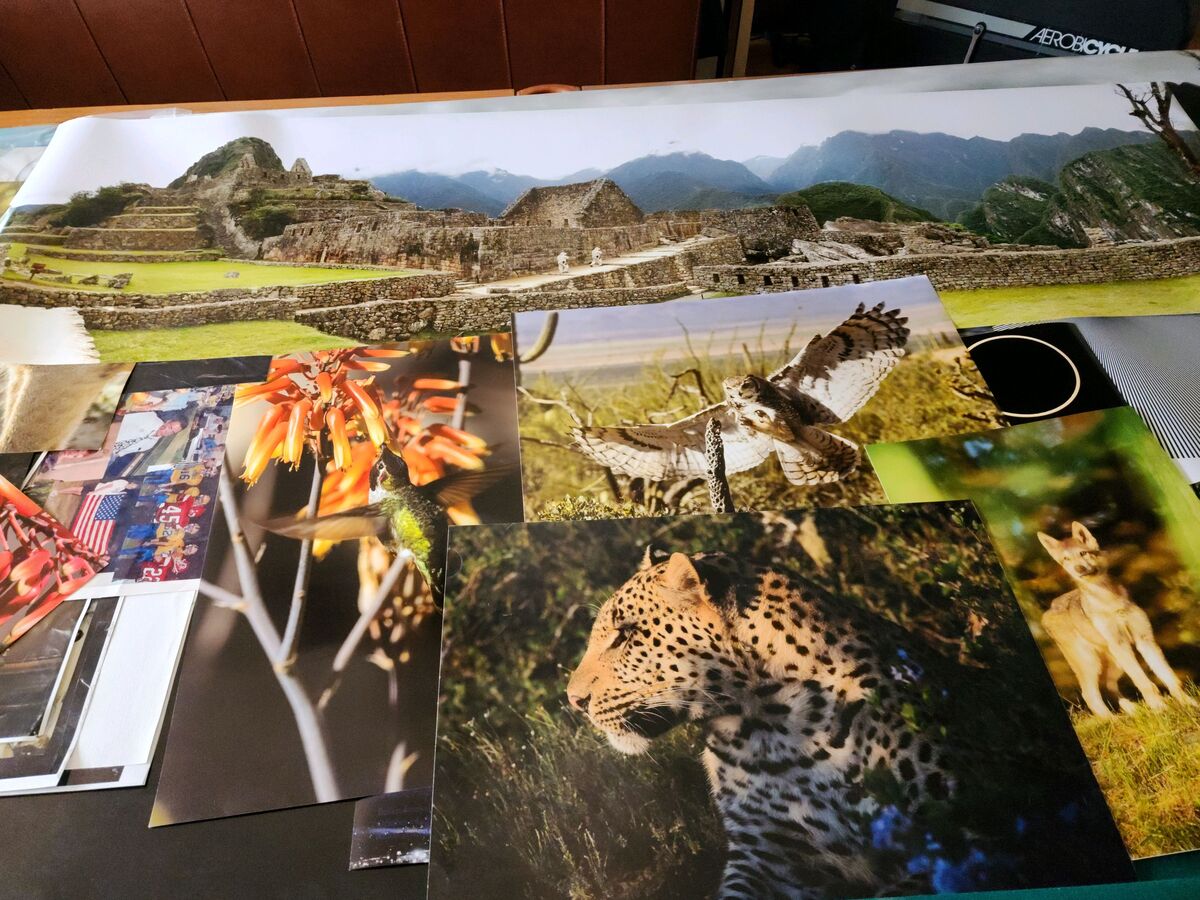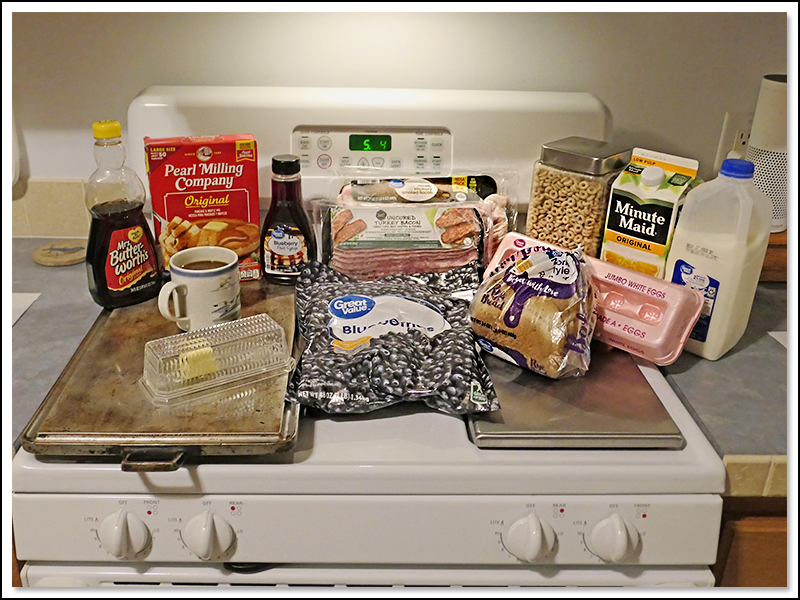I need advice on a large size printer
Nov 23, 2023 10:27:53 #
Flickwet wrote:
I love my Canon Pixma Pro 100! Love it! I’ve had it for a while now, never gives any problem at all. I also use 3rd party ink, a lot cheaper. I’m very happy with my 13x19 prints
I’ve owned 3 Wide Format Epson printers and unless you use them constantly the heads Will Clog! I switched to the Canon Pixma Pro 100 and have Never had a clogged head even it if sits for long periods of time. I Highly recommend Canon over Epson!
Nov 23, 2023 11:03:49 #
markwilliam1 wrote:
I’ve owned 3 Wide Format Epson printers and unless you use them constantly the heads Will Clog! I switched to the Canon Pixma Pro 100 and have Never had a clogged head even it if sits for long periods of time. I Highly recommend Canon over Epson!
The Canon 100 uses dye ink, the Canon 1000 uses pigment ink. Pigment ink has a much greater tendency to clog.
In addition, if a Canon 100 gets clogged, it is relatively straightforward to pull the head and unclog it.
Nov 23, 2023 11:04:29 #
markwilliam1 wrote:
I’ve owned 3 Wide Format Epson printers and unless you use them constantly the heads Will Clog! I switched to the Canon Pixma Pro 100 and have Never had a clogged head even it if sits for long periods of time. I Highly recommend Canon over Epson!
The draw of Epson printers is the OEM ink. High end Epson printers use dense pigment inks that provide an extremely wide color gamut and the most extreme print longevity available. A trade-off for those two desirable features is the potential for head clogging.
If you are a professional artist or photographer who prints several times a week or more, head clogging is not likely to be an issue. The key is to buy your ink from a high-volume source so it is fresh when you get it, and then use it all up, A) before the expiration date, AND B) within six months of installing a cartridge. Also, DO NOT let the printer sit without making prints for more than a week.
Large format printers typically have plastic tubing to carry the ink from the cartridge bay on one end of the printer to the heads that slide along a rail in the center of the printer. It is critical to NOT let pigment "settle out" in those lines. Hence, the need to USE the printer frequently.
Another warning I'll mention is that some third party inks don't mix well with Epson inks. Some brands will actually cause precipitates to form in the ink lines and heads, at the point where the third party ink mixes with the last of your Epson ink. That, of course, leads to clogs.
If your environment is a busy art school, a photo lab, a museum that prints artists' work for sale to patrons on a daily basis, or you are a professional photographer specializing in large landscapes or wall-hanging "carriage trade" portraits larger than 16x20 inches, then owning your own high-end Epson makes lots of sense. But if you make a few dozen prints a year, work with a custom lab to have them do it. Otherwise, it is not worth the hassle.
We had three wide-format Epsons in the school portrait lab I worked for. I ordered the first of them in 2003. It ran 8 to 24 hours a day, flawlessly, for years. The only two times the heads clogged were when it sat for almost two weeks in the summer, and when one of my employees ordered third party inks for it. The latter incident resulted in the need for a head replacement and all-new ink lines. Epson's technician showed me how the precipitate that formed from the third party ink mixing with Epson ink was hard as a rock. That printer was still going in 2011 when our corporate fathers sold our division to another company.
If you DO high volume work, seek a source for paper and ink that will give you a volume discount. We bought our supplies from Fuji-Hunt at a VERY substantial discount. But we used hundreds of square feet of paper every week, and we ordered four or five of each ink cartridge at a time.
High end inkjet printing requires some special knowledge of how to handle prints after they are made. They need to "out-gas" the ink solvents under sheets of blank newsprint for 24 to 48 hours after printing, before mounting or framing or shipping them in tubes.
Another thing to be aware of is that your prints will look far better when printed on a high end inkjet than they do on conventional silver-halide-based chromogenic photo papers. They use lots of inks to provide a much wider color gamut than can be achieved with just the three dyes in a wet-process photo paper. The estimated life before fading is about five times longer, as well!
Nov 23, 2023 11:16:38 #
sanhuberto wrote:
I know that I will be getting good advice from my ... (show quote)
For my $, I think the Epson P900 gives a good bang for the buck. The one big improvement that Epson made is that there is both a Photo Black and a Matte Black channel so you don't have to keep wasting ink when changing from Matte Black to Photo Black and back. My P900 provides great images and I am no also using it to print Direct-To-Plate Photogravure plates.
Nov 23, 2023 11:22:51 #
I restart my Canon Pro 1000 occasionally, which goes through a cartridge agitation cycle and dumps a bit of ink into the maintenance cartridge. Yes this is a bit of wasted ink and fills the maintenance cartridge sooner, but it keeps the print head and lines flowing. The maintenance cartridge is only $15. and is cheaper than replacing the head.
Nov 23, 2023 11:41:07 #
burkphoto wrote:
The draw of Epson printers is the OEM ink. High en... (show quote)
I hate to disagree with you but Epson has reformulated their inks and head clogging, while it can still happen, is far more infrequent. My P7000 and P900 can easily sit for 2 months with no ill effects.
Nov 23, 2023 12:05:30 #
sanhuberto wrote:
I know that I will be getting good advice from my ... (show quote)
Years ago I had an Epson large format printer and traded it in for Canon iPF-8100 from that point I have only bought Canon inkjet printers. Owned PRO-1, PRO-10 and now own 2 PRO-1000s. Canon tech support is very good. Sold the iPF-8100 and bought a iPF-8400. I have had only 1 problem with a printers print head and they replaced it and that was on the iPF-8400. Bought the first PRO-1000 when it first came out, bought the second one to use at work. If you can afford it I would recommend the PRO-1000 but it does not support roll paper. If you shoot panos you are limited to 25 inches in lenght I think. I do profile the printers. And with the 12 colors I get fantastic results. The only downside is it uses ink when you turn it on. When you first turn it on it uses a lot of ink to fill the plumbing. The pano is off the iPF-8400 the rest are off the PRO-1000.

Nov 23, 2023 12:13:25 #
1grumpybear wrote:
Years ago I had an Epson large format printer and ... (show quote)
The maximum length for the Pro-1000 was increased to 1200mm (47.2 inches).
Nov 23, 2023 12:31:51 #
burkphoto wrote:
The draw of Epson printers is the OEM ink. High en... (show quote)
Thanks for the reminder. I'm sitting here next to my P800 that I haven't used in about a month. I shot a quick picture of tomorrow's breakfast and printed it. It took a long time to start printing, spending that time it sounded like cleaning nozzles. It then popped up with a software update.
Happy Thanksgiving.

Nov 23, 2023 14:05:19 #
Here's a link with excellent printer information.
https://www.youtube.com/playlist?list=PL2Ud6AP-Z5JCIsIECJndFVcQQB9NT_u0K
https://www.youtube.com/playlist?list=PL2Ud6AP-Z5JCIsIECJndFVcQQB9NT_u0K
Nov 23, 2023 14:22:12 #
chemsaf wrote:
After trying HP and Canon, I now only use Epson. I have 3.
👍👍👍
Nov 23, 2023 14:25:51 #
Nov 23, 2023 15:19:25 #
BobHartung wrote:
I hate to disagree with you but Epson has reformulated their inks and head clogging, while it can still happen, is far more infrequent. My P7000 and P900 can easily sit for 2 months with no ill effects.
Good to hear! Yes, I know they’ve worked on it for 20+ years, now, and it’s certainly better, but owners still complain. Every consumer grade Epson we’ve owned (9 since the late 1980s) “died” of a head clog. But we got plenty of use from them while they worked. I still prefer them.
Nov 23, 2023 15:44:39 #
burkphoto wrote:
Good to hear! Yes, I know they’ve worked on it for 20+ years, now, and it’s certainly better, but owners still complain. Every consumer grade Epson we’ve owned (9 since the late 1980s) “died” of a head clog. But we got plenty of use from them while they worked. I still prefer them.
been using my Epson Stylus 7800 Pro for at least 12 years. I run the head cleaner every 6 months and have never had a clog, even though it can be several months between usages. uses up some ink, but I can always depend on it to work when needed.
I've never been tempted to try anything but Epson inks.
10 cartridges @ about $130 per. I go through a set every 18-24 months.
largest print to date: 24" x 8'7" on superfine print quality. WOW.
other printer for daily use is a stylus photo r2400.
portable for on-the-job printing are 3 Photo R380s
mrbill
Nov 23, 2023 16:49:08 #
smf85
Loc: Freeport, IL
sanhuberto wrote:
I know that I will be getting good advice from my ... (show quote)
I have an Epson P5000 with the 200ml ink cartridges. It prints up to 17” width and accepts roll paper. Extremely high quality results. It does clog rather easily if it’s not regularly used. Thankfully, the minimal usage needed is a print test strip every few days so it’s not bad. Overall it’s a very high quality professional unit.
If you want to reply, then register here. Registration is free and your account is created instantly, so you can post right away.






